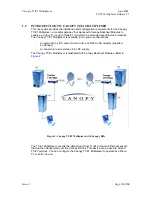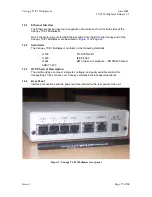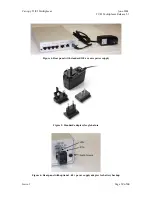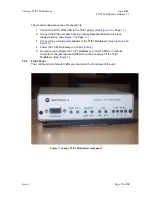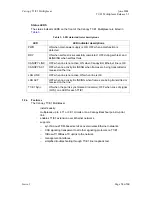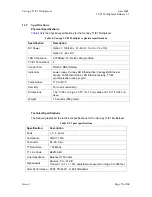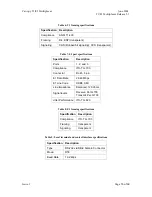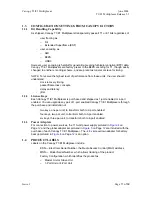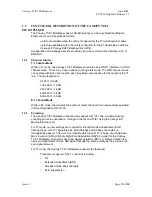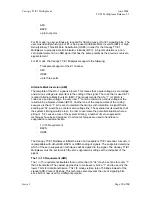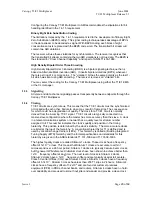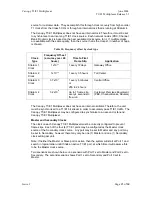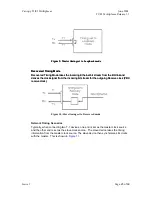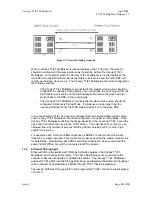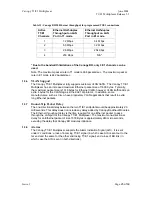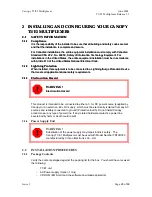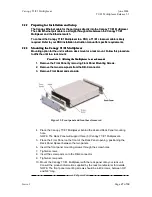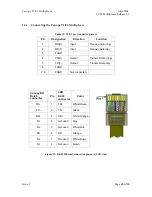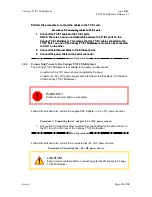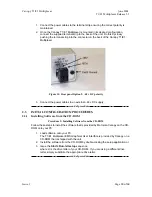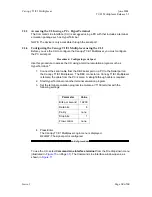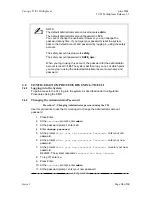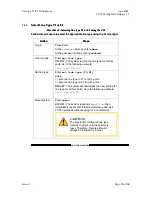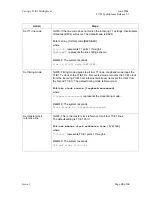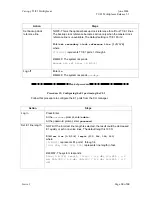
Canopy
T1/E1
Multiplexer
June
2004
T1/E1
Multiplexer
Release
3.1
24 of 69
Figure 11: Network timing scenarios
When a Canopy T1/E1 Multiplexer is inserted between two T1 devices, the clocking
should be configured in the same manner as it would be without the Canopy T1/E1
Multiplexer. For example, when the Canopy T1/E1 Multiplexer is inserted between the
two PBXs, the one PBX will remain as the master clock source and the other PBX will
remain as the slave clock source. The Canopy T1/E1 Multiplexer should be configured in
the following manner:
◦
The Canopy T1/E1 Multiplexer connected to the master clock source should be
configured in Loopback Timing Mode. The unit will take the clock signal from the
PBX master clock source on the PBX transmit side, derive the clock and then
send it back to the PBX on the receive side.
◦
The Canopy T1/E1 Multiplexer connected to the slave clock source should be
configured in Recovery Timing Mode. It will derive a clock signal from the
incoming bit stream from the WAN side and pass it on to the slave PBX.
In a scenario where T1/E1 devices are configured with an external master clock source,
each Canopy T1/E1 Multiplexer should be configured in Loopback Timing Mode. Each
Canopy T1/E1 Multiplexer will take the timing signal from the incoming T1/E1, derive the
clock and then return the clock to the T1/E1 device. The external clock source may be
obtained from any number of sources including Carrier services, GPS, or other high-
quality clock source.
For example, each of the two PBXs might have a SONET connection from the local
telephone company operator. This connection would be used as the master clock source
for both PBXs. Alternatively, each PBX could have a Stratum 3 clock source from the
same Central Office, or could be connected to GPS receivers.
1.5.5
Ethernet
Throughput
Ethernet traffic is transmitted at 100 Mpbs full duplex between the Canopy T1/E1
Multiplexer and Canopy BH systems. The LAN side Ethernet port, connected to the
customer LAN, also transmits at 100 Mpbs full duplex. The Canopy T1/E1 Multiplexer
will insert T1/E1 traffic into the Ethernet bit stream and therefore the Ethernet throughput
will be reduced by approximately 2 Mbps for each T1/E1 that is programmed.
The rates for Ethernet throughput for each programmed T1/E1 connection are displayed
in
Table 11
.
Issue
1
Page

